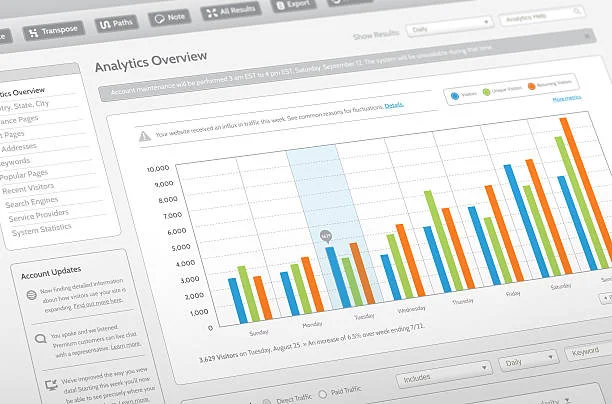Why Your Website Isn’t Showing Up on Google—And How to Fix It

You’ve launched a new website and expected to start getting traffic, but nothing’s happening. Your site isn’t appearing on Google, and that’s a serious issue, especially if you’re relying on it to bring in leads or grow your business. Here’s what could be going wrong, and how to fix it quickly.
The #1 Reason New Websites Don’t Appear on Google

The most common reason a website doesn’t show up on Google is because it hasn’t been indexed yet. Indexing is Google’s way of adding your site to its database. If your pages aren’t in the index, they won’t appear in any search results.
For new sites, this process can take days or even weeks. But in many cases, something is blocking Google entirely, such as:
- A “noindex” tag in the code
- A robots.txt file that restricts crawlers
- Missing sitemap or broken internal links
If your website design and development team didn’t handle these basics, your site might be invisible from day one.
Is Your Site Being Indexed? Here’s How to Check

To find out if Google knows your site exists, do a simple search like this:
site: yourdomain.com
If no results appear, it means Google hasn’t indexed your site yet. You’ll need to check for issues using Google Search Console. It can show you crawl errors, blocked URLs, and index status.
Some quick things to review:
- Is your sitemap submitted in the Search Console?
- Is your site blocked by mistake?
- Do all your pages load properly and link to each other?
These basics are essential if you’re creating a website for business and want it to perform well in search.
Missing Meta Data and Headings? You Might Be Invisible

Even if your site is indexed, poor on-page structure can stop it from ranking. A common issue is missing or misused metadata — like title tags and meta descriptions. Through this metadata, Google can know what each page is about.
Also important are headings (H1, H2, etc.). If your content doesn’t use them correctly, it becomes harder for search engines to understand and rank your pages.
A properly optimised site should include:
- One clear H1 heading per page
- Descriptive, keyword-rich title tags
- Unique meta descriptions that encourage clicks
- Fast-loading pages and mobile-friendly design
Many top SEO agencies offer on-page SEO audits to find these types of issues fast.
Content Gaps and Keyword Misses
Google relies on content to decide which results to show. If your pages don’t match what people are searching for, your site won’t rank even if it’s indexed and technically sound.
Some signs you’ve missed the mark:
- No targeted keywords on main pages
- Outdated or thin content
- No blog or resource section
- Content that’s too broad or generic
The best SEO marketing strategies focus on creating pages that solve real problems and answer real questions. If you want websites that generate leads, start with high-quality content that aligns with what your audience actually needs.
How to Fix It: DIY or Done-For-You Options

Once you’ve identified the problems, you have two choices: fix them yourself or get help from experts.
DIY Fixes
- Submit your sitemap to Google via Search Console
- Remove any “noindex” tags and unblock key pages
- Use free SEO tools to scan for errors
- Add headings, internal links, and keyword-focused content
- Make sure to add unique title tags and meta descriptions for each page
DIY is a good option if you’re confident with technical SEO and have time to monitor results.
Done-For-You Solutions
If you prefer to leave it to the pros, hiring one of the top SEO agencies can save you time and deliver better long-term results. These teams can handle:
- Technical clean-ups
- Keyword research
- On-page and off-page SEO
- Content strategies that focus on SEO for lead generation.
They’ll also ensure your website design supports your SEO goals and does not work against them.
Conclusion
Not appearing on Google is a sign something’s not right. It might be a missed setting, a blocked page, or a content gap but all of these can be fixed.
Don’t just build a nice-looking site. Build one that works. With the right structure, keywords, and technical setup, your site can start attracting the traffic it was built for. Focus on best SEO marketing practices from the start, and you’ll be in a better position to turn visits into real leads.

Similar Posts
AI Copyright Wars: Creators vs Tech Giants in Australia
AI in Australian Hospitals: 8 Real-World Applications
Significant Impact of Virtual Reality in Education